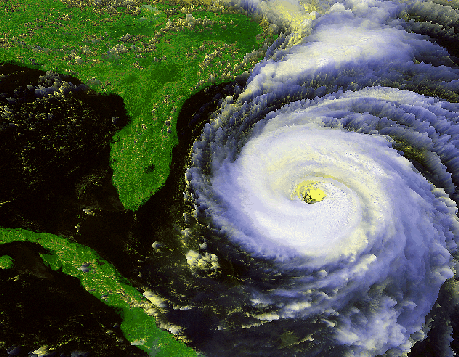Explanation: Two weeks ago Hurricane Fran, pictured above, struck the east coast of the United States. Hurricanes are huge swirling storms with cloud systems typically larger than a state. Tropical cyclones, called Hurricanes in Earth's Western Hemisphere and Typhoons in the Eastern Hemisphere, get their immense energy from warm evaporated ocean water. As this water vapor cools and condenses, it heats the air, lowers pressure and hence causes cooler air to come swooshing in. Winds can reach over 150 miles per hour and become very dangerous. Hurricane Fran, for example, killed more than 30 people and destroyed many million of dollars worth of property. Much remains unknown about cyclones, including how they are formed and the exact path they will take.
1999 2000 2001 2002 2003 2004 2005 2006 2007 2008 2009 2010 2011 2012 2013 2014 2015 2016 2017 2018 2019 2020 2021 2022 2023 2024 2025 |
Yanvar' Fevral' Mart Aprel' Mai Iyun' Iyul' Avgust Sentyabr' Oktyabr' Noyabr' Dekabr' |
NASA Web Site Statements, Warnings, and Disclaimers
NASA Official: Jay Norris. Specific rights apply.
A service of: LHEA at NASA / GSFC
& Michigan Tech. U.
|
Publikacii s klyuchevymi slovami:
uragan - oblaka - Klimat Zemli
Publikacii so slovami: uragan - oblaka - Klimat Zemli | |
Sm. takzhe:
Vse publikacii na tu zhe temu >> | |
